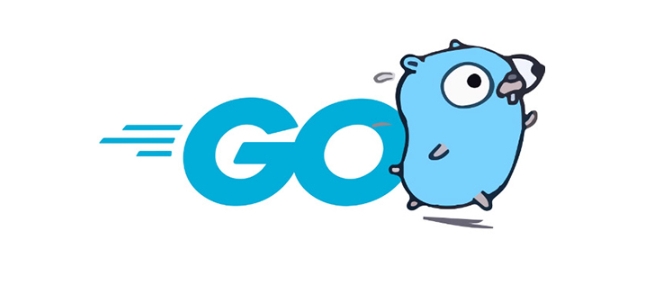What are the best strategies for deploying a Golang application?
Aug 02, 2025 am 05:29 AMCompile Go applications into static binaries using CGO_ENABLED=0 and cross-compilation for portability; 2. Use minimal Docker containers with multi-stage builds and scratch base images to reduce size and improve security; 3. Automate testing, building, and deployment via CI/CD pipelines using tools like GitHub Actions or GitLab CI; 4. Choose appropriate hosting environments such as VMs, Kubernetes, serverless platforms, or PaaS based on scalability and operational needs; 5. Manage configuration and secrets externally using environment variables, config files, or secrets managers like Vault or AWS Secrets Manager; 6. Implement structured logging, metrics exposure via Prometheus, and health checks for observability; 7. Ensure zero-downtime deployments with rolling updates and graceful shutdowns in the application code to maintain reliability during releases. This comprehensive approach leverages Go’s simplicity and performance while aligning with modern deployment best practices.

Deploying a Golang application effectively involves balancing simplicity, reliability, performance, and maintainability. Since Go compiles to a single binary with minimal dependencies, it offers unique advantages for deployment. Here are the best strategies:

1. Use Static Binaries for Simplicity and Portability
Go can compile into a fully static binary (no external dependencies), which makes deployment extremely straightforward.
- Set
CGO_ENABLED=0to disable CGO and ensure a truly static build. - Use
GOOSandGOARCHto cross-compile for your target environment.
CGO_ENABLED=0 GOOS=linux GOARCH=amd64 go build -o myapp
This binary can be copied directly to a server or included in a minimal container (like Alpine Linux or even scratch), reducing attack surface and startup time.

2. Deploy with Minimal Docker Containers
Even if you're using containers, leverage Go’s static compilation to create tiny, secure images.
Example Dockerfile using multi-stage builds:

# Build stage FROM golang:1.21 AS builder WORKDIR /app COPY . . RUN CGO_ENABLED=0 GOOS=linux go build -o myapp . # Runtime stage FROM scratch COPY --from=builder /app/myapp /myapp EXPOSE 8080 CMD ["/myapp"]
Using scratch means your image is only as big as your binary—often under 20MB. This improves security, reduces attack surface, and speeds up deployment.
3. Automate with CI/CD Pipelines
Use tools like GitHub Actions, GitLab CI, or Jenkins to automate testing, building, and deployment.
Key steps in a CI/CD pipeline:
- Run tests and linters (
go test,golangci-lint) - Build the binary or Docker image
- Push image to a registry (e.g., Docker Hub, AWS ECR)
- Deploy to staging or production (via Kubernetes, ECS, or a VM)
This ensures consistency and reduces human error.
4. Choose the Right Hosting Environment
Depending on your needs, pick a deployment platform that matches your scale and complexity:
- Virtual Machines (VMs): Simple for small apps. Copy the binary via SSH and run with systemd or a process manager.
- Kubernetes: Ideal for scalable, resilient microservices. Package your app in a container and deploy with Helm or Kustomize.
- Serverless (e.g., AWS Lambda via Go runtime): Good for event-driven workloads. Use tools like AWS SAM or the Serverless Framework.
- PaaS (e.g., Fly.io, Render, Heroku): Great for quick deployments with minimal DevOps overhead.
Fly.io, for example, is especially Go-friendly and lets you deploy globally in minutes.
5. Manage Configuration and Secrets Properly
Avoid hardcoding settings. Use:
- Environment variables (standard in 12-factor apps)
- Configuration files (loaded from a known path)
- Secrets managers (e.g., HashiCorp Vault, AWS Secrets Manager)
Example in code:
port := os.Getenv("PORT")
if port == "" {
port = "8080"
}Ensure secrets never end up in your binary or version control.
6. Monitor and Log Effectively
Once deployed, monitor health and performance.
- Use structured logging (e.g., with
log/slogorzap) and send logs to a central system (Loki, ELK, etc.). - Expose metrics (via Prometheus) for CPU, memory, request rates, latency.
- Set up health checks (
/healthendpoint) for load balancers or orchestration tools.
7. Implement Rolling Updates and Zero-Downtime Deployments
If using Kubernetes or a load balancer:
- Use rolling updates to avoid downtime.
- Implement graceful shutdowns in your Go app:
server := &http.Server{Addr: ":8080"}
go func() {
if err := server.ListenAndServe(); err != nil && err != http.ErrServerClosed {
log.Fatal(err)
}
}()
// Wait for interrupt signal
c := make(chan os.Signal, 1)
signal.Notify(c, os.Interrupt)
<-c
// Gracefully shut down
ctx, cancel := context.WithTimeout(context.Background(), 30*time.Second)
defer cancel()
server.Shutdown(ctx)This ensures active requests finish before the process exits.
Basically, the best deployment strategy combines Go’s strengths—static binaries, fast performance, and simplicity—with modern practices like containerization, automation, and observability. Pick tools and platforms that match your team’s size and goals, and always automate what you can.
The above is the detailed content of What are the best strategies for deploying a Golang application?. For more information, please follow other related articles on the PHP Chinese website!

Hot AI Tools

Undress AI Tool
Undress images for free

Undresser.AI Undress
AI-powered app for creating realistic nude photos

AI Clothes Remover
Online AI tool for removing clothes from photos.

Clothoff.io
AI clothes remover

Video Face Swap
Swap faces in any video effortlessly with our completely free AI face swap tool!

Hot Article

Hot Tools

Notepad++7.3.1
Easy-to-use and free code editor

SublimeText3 Chinese version
Chinese version, very easy to use

Zend Studio 13.0.1
Powerful PHP integrated development environment

Dreamweaver CS6
Visual web development tools

SublimeText3 Mac version
God-level code editing software (SublimeText3)

Hot Topics
 Is golang frontend or backend
Jul 08, 2025 am 01:44 AM
Is golang frontend or backend
Jul 08, 2025 am 01:44 AM
Golang is mainly used for back-end development, but it can also play an indirect role in the front-end field. Its design goals focus on high-performance, concurrent processing and system-level programming, and are suitable for building back-end applications such as API servers, microservices, distributed systems, database operations and CLI tools. Although Golang is not the mainstream language for web front-end, it can be compiled into JavaScript through GopherJS, run on WebAssembly through TinyGo, or generate HTML pages with a template engine to participate in front-end development. However, modern front-end development still needs to rely on JavaScript/TypeScript and its ecosystem. Therefore, Golang is more suitable for the technology stack selection with high-performance backend as the core.
 How to build a GraphQL API in golang
Jul 08, 2025 am 01:03 AM
How to build a GraphQL API in golang
Jul 08, 2025 am 01:03 AM
To build a GraphQLAPI in Go, it is recommended to use the gqlgen library to improve development efficiency. 1. First select the appropriate library, such as gqlgen, which supports automatic code generation based on schema; 2. Then define GraphQLschema, describe the API structure and query portal, such as defining Post types and query methods; 3. Then initialize the project and generate basic code to implement business logic in resolver; 4. Finally, connect GraphQLhandler to HTTPserver and test the API through the built-in Playground. Notes include field naming specifications, error handling, performance optimization and security settings to ensure project maintenance
 How to install Go
Jul 09, 2025 am 02:37 AM
How to install Go
Jul 09, 2025 am 02:37 AM
The key to installing Go is to select the correct version, configure environment variables, and verify the installation. 1. Go to the official website to download the installation package of the corresponding system. Windows uses .msi files, macOS uses .pkg files, Linux uses .tar.gz files and unzip them to /usr/local directory; 2. Configure environment variables, edit ~/.bashrc or ~/.zshrc in Linux/macOS to add PATH and GOPATH, and Windows set PATH to Go in the system properties; 3. Use the government command to verify the installation, and run the test program hello.go to confirm that the compilation and execution are normal. PATH settings and loops throughout the process
 Go sync.WaitGroup example
Jul 09, 2025 am 01:48 AM
Go sync.WaitGroup example
Jul 09, 2025 am 01:48 AM
sync.WaitGroup is used to wait for a group of goroutines to complete the task. Its core is to work together through three methods: Add, Done, and Wait. 1.Add(n) Set the number of goroutines to wait; 2.Done() is called at the end of each goroutine, and the count is reduced by one; 3.Wait() blocks the main coroutine until all tasks are completed. When using it, please note: Add should be called outside the goroutine, avoid duplicate Wait, and be sure to ensure that Don is called. It is recommended to use it with defer. It is common in concurrent crawling of web pages, batch data processing and other scenarios, and can effectively control the concurrency process.
 Go embed package tutorial
Jul 09, 2025 am 02:46 AM
Go embed package tutorial
Jul 09, 2025 am 02:46 AM
Using Go's embed package can easily embed static resources into binary, suitable for web services to package HTML, CSS, pictures and other files. 1. Declare the embedded resource to add //go:embed comment before the variable, such as embedding a single file hello.txt; 2. It can be embedded in the entire directory such as static/*, and realize multi-file packaging through embed.FS; 3. It is recommended to switch the disk loading mode through buildtag or environment variables to improve efficiency; 4. Pay attention to path accuracy, file size limitations and read-only characteristics of embedded resources. Rational use of embed can simplify deployment and optimize project structure.
 Go for Audio/Video Processing
Jul 20, 2025 am 04:14 AM
Go for Audio/Video Processing
Jul 20, 2025 am 04:14 AM
The core of audio and video processing lies in understanding the basic process and optimization methods. 1. The basic process includes acquisition, encoding, transmission, decoding and playback, and each link has technical difficulties; 2. Common problems such as audio and video aberration, lag delay, sound noise, blurred picture, etc. can be solved through synchronous adjustment, coding optimization, noise reduction module, parameter adjustment, etc.; 3. It is recommended to use FFmpeg, OpenCV, WebRTC, GStreamer and other tools to achieve functions; 4. In terms of performance management, we should pay attention to hardware acceleration, reasonable setting of resolution frame rates, control concurrency and memory leakage problems. Mastering these key points will help improve development efficiency and user experience.
 How to build a web server in Go
Jul 15, 2025 am 03:05 AM
How to build a web server in Go
Jul 15, 2025 am 03:05 AM
It is not difficult to build a web server written in Go. The core lies in using the net/http package to implement basic services. 1. Use net/http to start the simplest server: register processing functions and listen to ports through a few lines of code; 2. Routing management: Use ServeMux to organize multiple interface paths for easy structured management; 3. Common practices: group routing by functional modules, and use third-party libraries to support complex matching; 4. Static file service: provide HTML, CSS and JS files through http.FileServer; 5. Performance and security: enable HTTPS, limit the size of the request body, and set timeout to improve security and performance. After mastering these key points, it will be easier to expand functionality.
 Go select with default case
Jul 14, 2025 am 02:54 AM
Go select with default case
Jul 14, 2025 am 02:54 AM
The purpose of select plus default is to allow select to perform default behavior when no other branches are ready to avoid program blocking. 1. When receiving data from the channel without blocking, if the channel is empty, it will directly enter the default branch; 2. In combination with time. After or ticker, try to send data regularly. If the channel is full, it will not block and skip; 3. Prevent deadlocks, avoid program stuck when uncertain whether the channel is closed; when using it, please note that the default branch will be executed immediately and cannot be abused, and default and case are mutually exclusive and will not be executed at the same time.






